 I’m visiting Georgia’s Alazani Valley to participate in this years wine harvest, inspecting and sampling the grapes, helping them into the Qvevris and naturally taking an interest in previous vintages. The Alazani Valley benefits by being warm in the summer when the grapes are ripening, and is fed by the Alazani River, which originates from snow melt high in the Caucasus Mountains, irrigates the valley, and flows east. It empties out into the Caspian Sea. The mountains also provide a natural enhancement for vine cultivation here – grapes do not appreciate hot nights, they like to be cool in the evening. This means the Alazani Valley is one of the worlds great wine producing areas – cool air sweeps down at dusk from the Caucasus and blankets the entire valley with cool air overnight, until the morning sun burns that off once again and summer temperatures rise to 32 degrees. These are perfect conditions for grape cultivation.
I’m visiting Georgia’s Alazani Valley to participate in this years wine harvest, inspecting and sampling the grapes, helping them into the Qvevris and naturally taking an interest in previous vintages. The Alazani Valley benefits by being warm in the summer when the grapes are ripening, and is fed by the Alazani River, which originates from snow melt high in the Caucasus Mountains, irrigates the valley, and flows east. It empties out into the Caspian Sea. The mountains also provide a natural enhancement for vine cultivation here – grapes do not appreciate hot nights, they like to be cool in the evening. This means the Alazani Valley is one of the worlds great wine producing areas – cool air sweeps down at dusk from the Caucasus and blankets the entire valley with cool air overnight, until the morning sun burns that off once again and summer temperatures rise to 32 degrees. These are perfect conditions for grape cultivation.

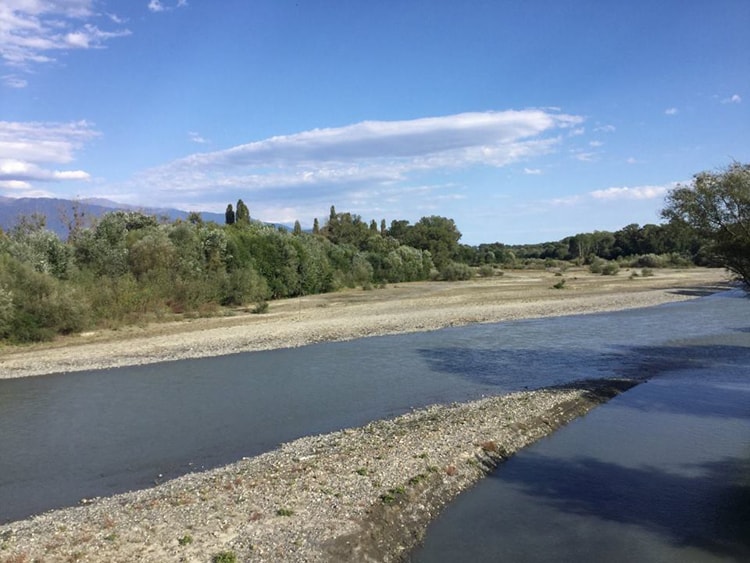 First though, I need to learn about making Qvevri’s, the huge terracotta jars that these wines are traditionally stored in. They are all hand made, and can be in service for decades. Locals homesteads make them, carefully by hand to this day, making clay from the local soils, building up the Qvevris carefully day by day. It takes two months to make an unfired clay Qvevri, all by hand.
First though, I need to learn about making Qvevri’s, the huge terracotta jars that these wines are traditionally stored in. They are all hand made, and can be in service for decades. Locals homesteads make them, carefully by hand to this day, making clay from the local soils, building up the Qvevris carefully day by day. It takes two months to make an unfired clay Qvevri, all by hand.

 They are then carefully wheeled into a home made kiln, and bricked up. A fire is lit, and this is a time to keep watch, the temperature must be maintained, meaning someone has to be on duty day and night. The temperatures can reach 1200 degrees, it taking two weeks to fire them. After that, the Qvevri are left to cool down, the brick front of the kiln is broken down, and the fired Qvevri are nearly ready for use. In areas prone to earth tremors, Qvevri are encased in concrete to add additional strength. All are treated inside with a layer of beeswax to make them waterproof and provide antibacterial properties.
They are then carefully wheeled into a home made kiln, and bricked up. A fire is lit, and this is a time to keep watch, the temperature must be maintained, meaning someone has to be on duty day and night. The temperatures can reach 1200 degrees, it taking two weeks to fire them. After that, the Qvevri are left to cool down, the brick front of the kiln is broken down, and the fired Qvevri are nearly ready for use. In areas prone to earth tremors, Qvevri are encased in concrete to add additional strength. All are treated inside with a layer of beeswax to make them waterproof and provide antibacterial properties.

 The Qvevri are then buried in the grounds at the vineyard, ready for use. The maker signs and dates each one on the outer rim, the one here was made in 1965.
The Qvevri are then buried in the grounds at the vineyard, ready for use. The maker signs and dates each one on the outer rim, the one here was made in 1965.


Next, I’m off to inspect the grapes. Harvest is done during hot, dry days, otherwise if rainy, the grapes become plump but watery. A wet summer can easily spoil a harvest. This year the weather has been perfect, there’s been some mid September rain, just enough to help them reach their optimum condition, followed by five days of dry, sunny weather. The conditions are erfect as we gather in the Saperavi harvest. I taste the grapes, they are sweet and delicious.

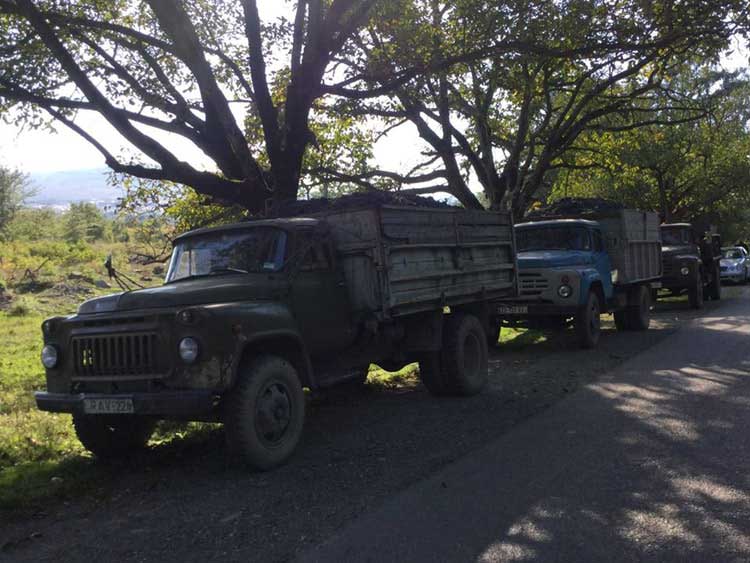
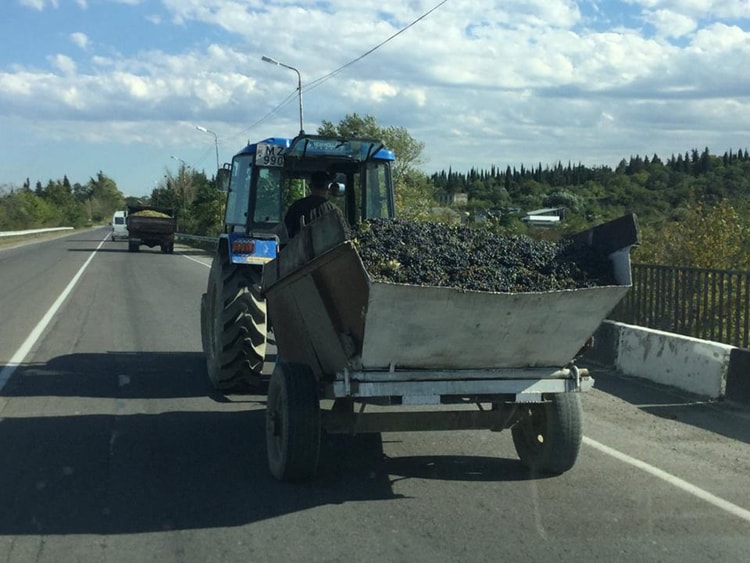
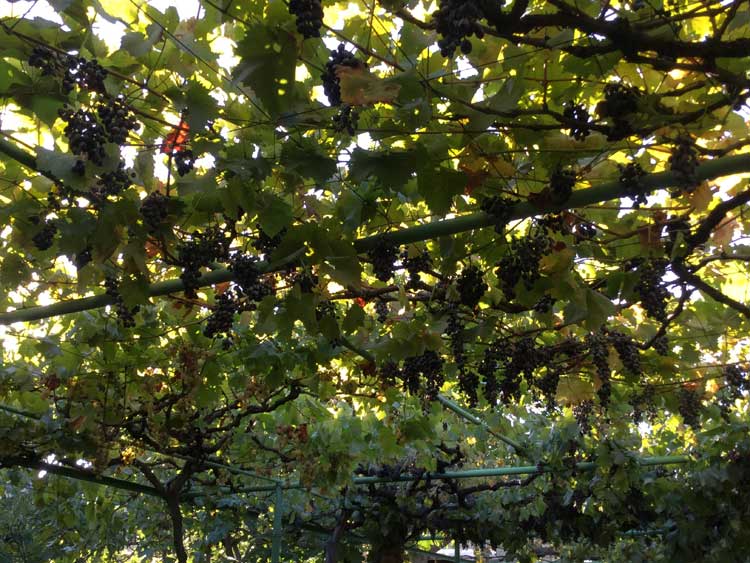
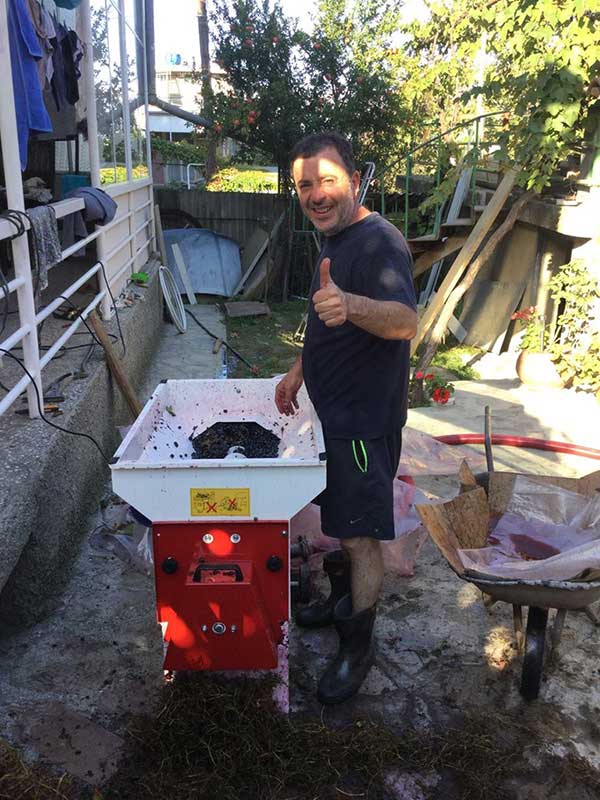 I visit Sandro Miloravas small, yet lovely home, where in a smallholding he produces some of the best local wines. He is busy with his local Saperavi Harvest and is using a small cultivator to strip off most of the stalks and twigs from hand fed bunches of grapes. The resulting juice is then pumped directly into the Qvevris.
I visit Sandro Miloravas small, yet lovely home, where in a smallholding he produces some of the best local wines. He is busy with his local Saperavi Harvest and is using a small cultivator to strip off most of the stalks and twigs from hand fed bunches of grapes. The resulting juice is then pumped directly into the Qvevris.
Around his house and garden, vines are trained, as well as luscious, sweet Pomegranates. The grapes hanging from his trellis, I learn are not for wine making, but consumption. They are a special varietal, originating from the Crimea, and are renowned for their perfumed aroma and taste. I try some, these are extraordinary. Sandro tells me there are none left in the Crimea; war and recession have destroyed the crops there. Georgia acts as a depository for many rare and endangered varietals, and I am reminded of the many Monasteries I have seen in the country, with row upon row of rare vines being cultivated. Some will not be very good stock, others will be amazing. Wine historians should be getting over to Georgia and finding what gems are still grown here, awaiting rediscovery.
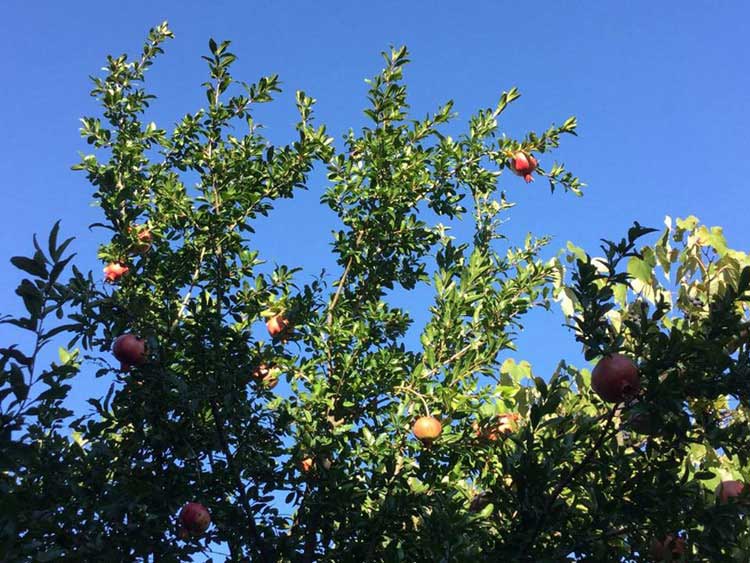
Sandro gives me a glass of his 2015 Rkatsiteli Qvevri to try. It is an amazing colour and a superb wine. He won a Gold medal for it, he tells me. I want to live here forever.
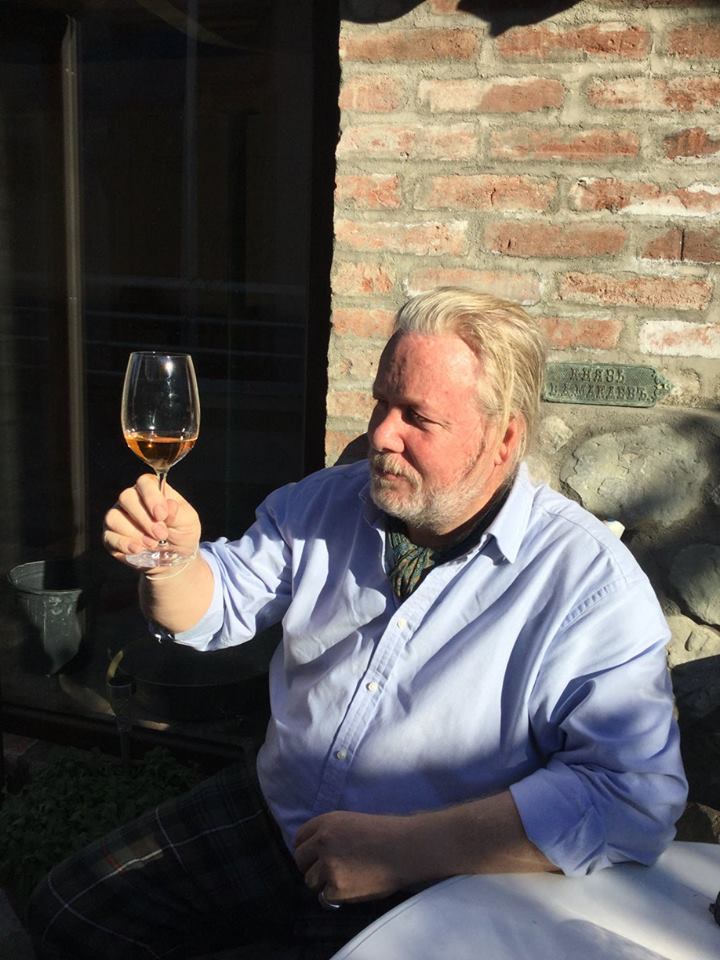 But there is work to be down; we must pump his Grapes into the Qvevri. These are a combination of 1000 and 2000 litre Qvevris, and are filled to the top.  Ones filled earlier need a good stir. They will stay on the lees for a minimum of two weeks, some longer. A good Qvevri wine is all about getting the amount of tannin right, too much on the lees and the wine can become unpalatable.
But there is work to be down; we must pump his Grapes into the Qvevri. These are a combination of 1000 and 2000 litre Qvevris, and are filled to the top.  Ones filled earlier need a good stir. They will stay on the lees for a minimum of two weeks, some longer. A good Qvevri wine is all about getting the amount of tannin right, too much on the lees and the wine can become unpalatable.
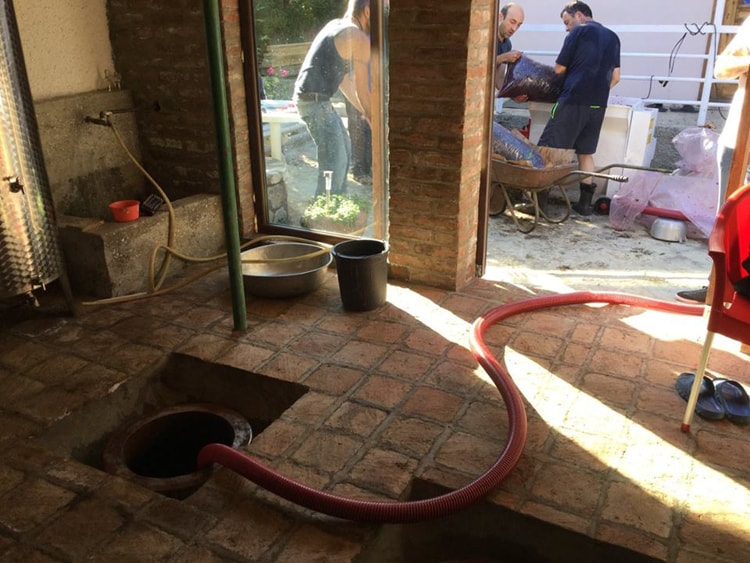
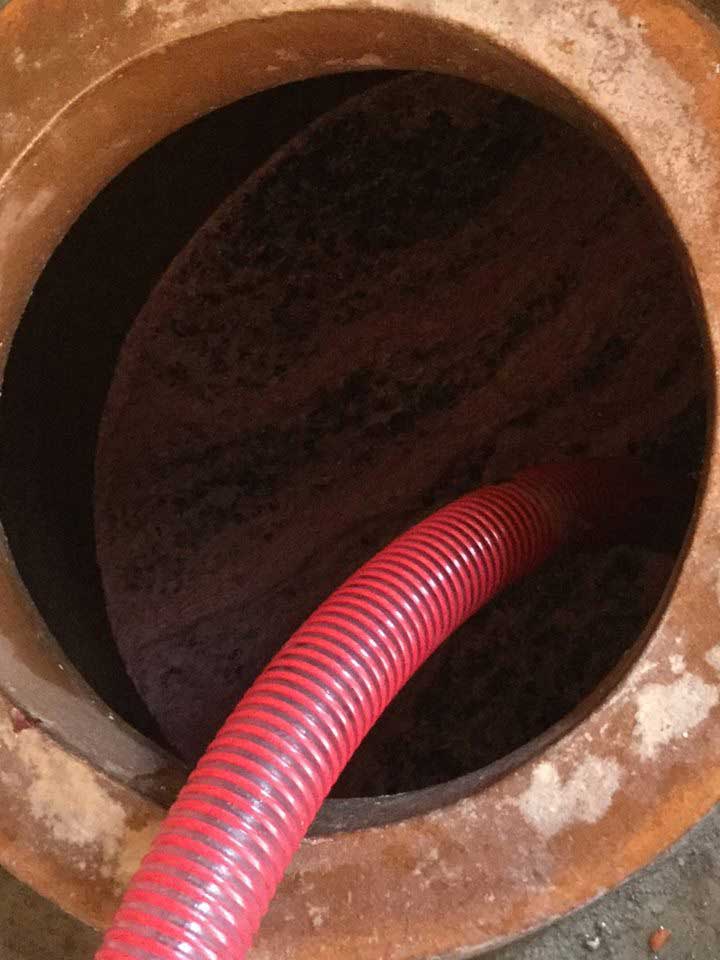
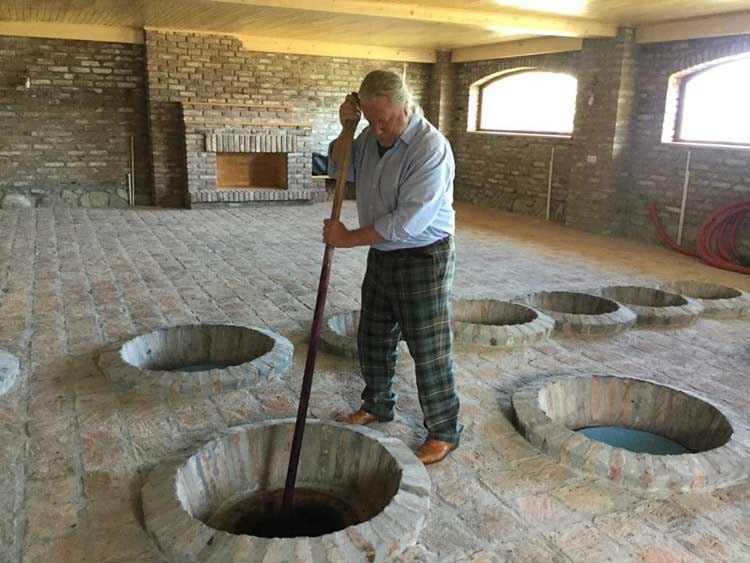
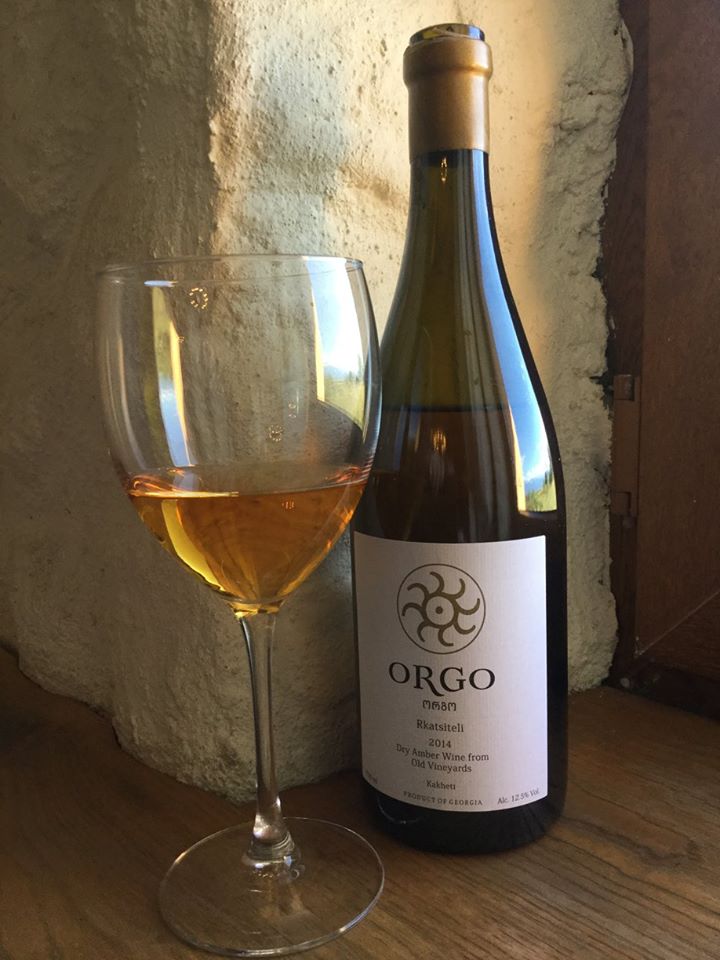 Later, I visit the Orgos Vineyards. The wine maker, Gogi Dakishvili, has been described as “The Rock Star of Georgian winemaking” by the Washington Post.
Later, I visit the Orgos Vineyards. The wine maker, Gogi Dakishvili, has been described as “The Rock Star of Georgian winemaking” by the Washington Post.
Shown is Orgo’s light white Qvevri wine, from Rkatsitelli grapes. This was on lees for about eight weeks, making it a lighter Qvevri suitable as a quaffing wine on a hot day. It’s not dissimilar in taste to a light Greek retsina.
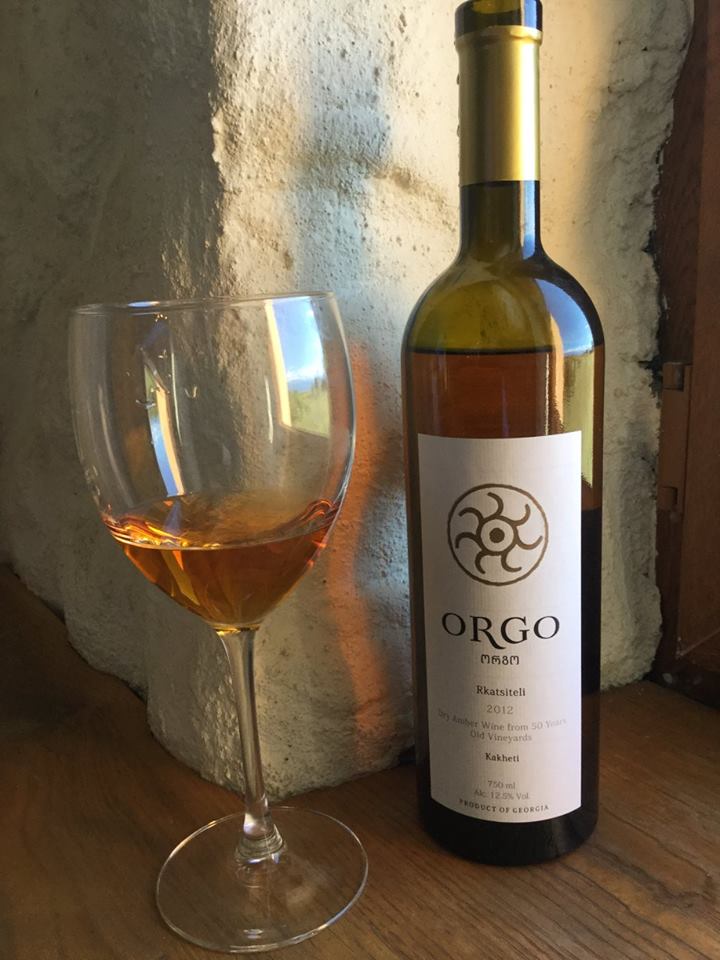 Next, I try an excellent white Qveveri, from 50 year old Raktsitelli vines. Left on lees for about six months. This is a full bodied wine that can take roasted meats and full bodied cheese and pickles and has an amazing Autumnal colour. This is why Qvevri white wines are sometimes known as “Amber” wines.
Next, I try an excellent white Qveveri, from 50 year old Raktsitelli vines. Left on lees for about six months. This is a full bodied wine that can take roasted meats and full bodied cheese and pickles and has an amazing Autumnal colour. This is why Qvevri white wines are sometimes known as “Amber” wines.
 Then is the 2014 Red Saperavi Qveveri. This had been on lees for about three weeks, and was a medium bodied wine not dissimilar to a Pinot Noir. A nicely balanced wine. There is a review here If it can be laid down and aged it’ll be awesome.
Then is the 2014 Red Saperavi Qveveri. This had been on lees for about three weeks, and was a medium bodied wine not dissimilar to a Pinot Noir. A nicely balanced wine. There is a review here If it can be laid down and aged it’ll be awesome.
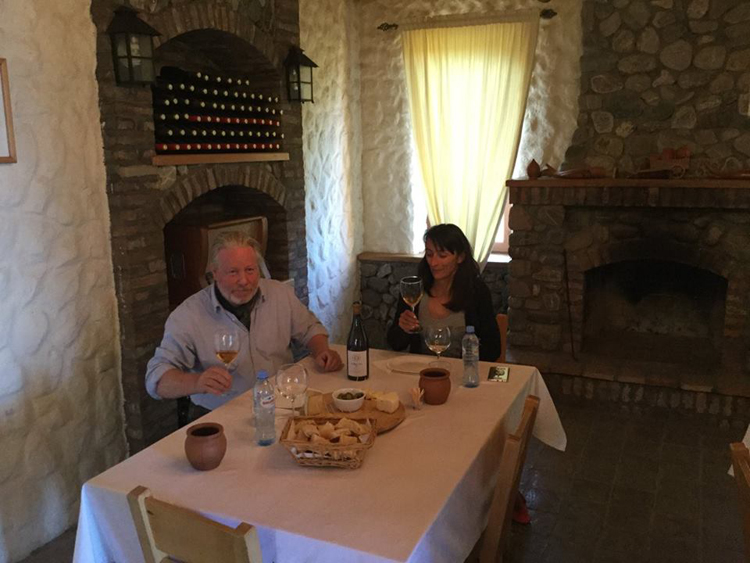 I am fortunate to be accompanied by the lovely Maka Tarashvilli, one of Georgia’s very few qualified wine masters. We snack on amazing local cheese, bread and pickles. Food for a Baron at the Orgo Vinyards.
I am fortunate to be accompanied by the lovely Maka Tarashvilli, one of Georgia’s very few qualified wine masters. We snack on amazing local cheese, bread and pickles. Food for a Baron at the Orgo Vinyards.
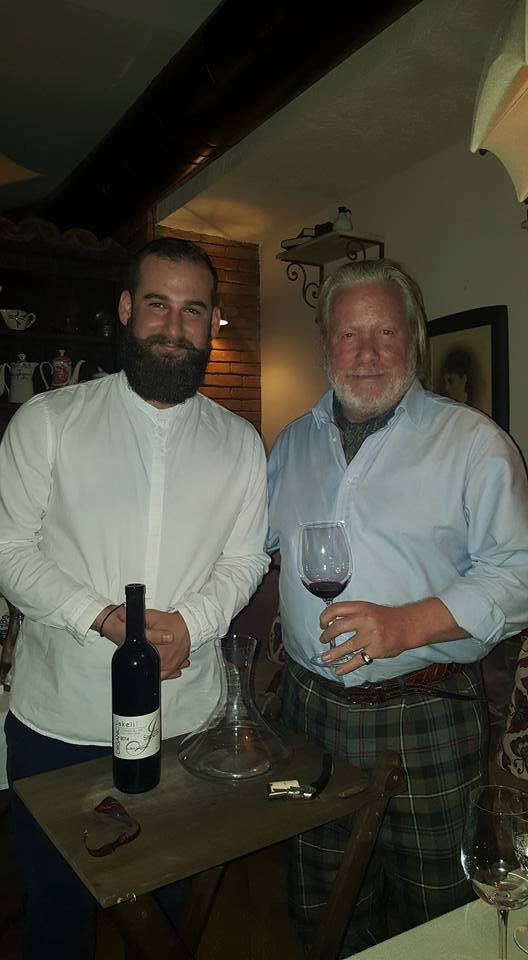 Later that evening, back in Tbiisi, we dine at the superb Barbarestan Restaurant, where the Wine Sommelier decants a young 2014 Sakeli Saperavi Qvevri that has already found its way onto several Michelin starred restaurant menus in London,Paris and Italy. This restaurant specializes in 19th century Georgian foods, from recipes collected from the personal diaries of Tsarist era Baroness Barbara Jorjadze. I look at the Sommelier – I wish I could cultivate my beard like that.
Later that evening, back in Tbiisi, we dine at the superb Barbarestan Restaurant, where the Wine Sommelier decants a young 2014 Sakeli Saperavi Qvevri that has already found its way onto several Michelin starred restaurant menus in London,Paris and Italy. This restaurant specializes in 19th century Georgian foods, from recipes collected from the personal diaries of Tsarist era Baroness Barbara Jorjadze. I look at the Sommelier – I wish I could cultivate my beard like that.
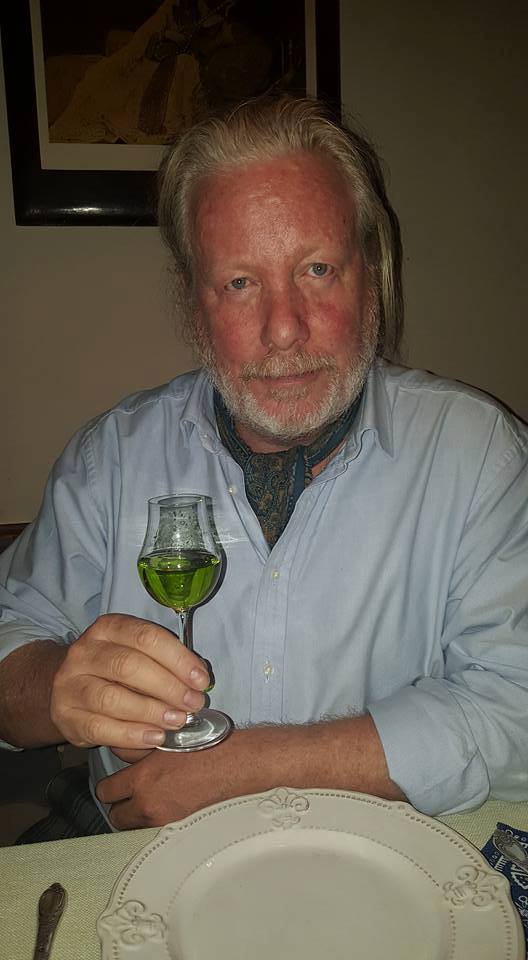 Finally, and somewhat bleary eyed, I finish the evening with a local Chacha, this time flavoured with Coriander. It’s not often I consume green alcohol, but it Is very good. I declare the 2016 Georgian Wine Harvest a complete success!
Finally, and somewhat bleary eyed, I finish the evening with a local Chacha, this time flavoured with Coriander. It’s not often I consume green alcohol, but it Is very good. I declare the 2016 Georgian Wine Harvest a complete success!